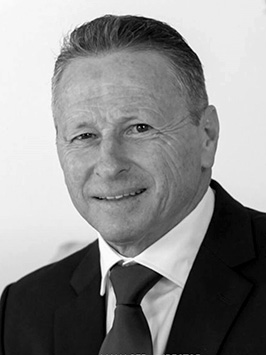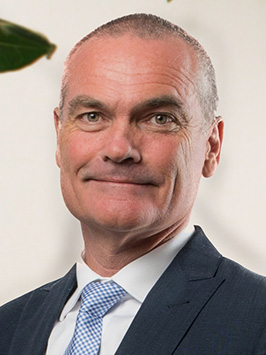The pockets of Sydney defying the downturn
Much has been made of Sydney property’s price declines over the past few months but many suburbs are defying the retreat that has followed years of record-breaking capital growth.
Much has been made of Sydney property’s price declines over the past few months but many suburbs are defying the retreat that has followed years of record-breaking capital growth.
While Sydney housing values recorded the third consecutive month-on-month decline, down 0.2 per cent, 25 suburbs are bucking the downward trend.
Shore Financial’s latest State of Sydney report listed them for projected growth over the next six months.
While the growth will lack the dazzling spectacle of the past 24 months, they are the standouts among Sydney’s 600-plus suburbs.
Categorised by the report into quintiles labelled working class, suburban, rising, professional and elite, they’re ranked in top five lists for each classification.
Shore Financial CEO Theo Chambers acknowledged the report arrived during a downturn.
“The decline, though, is not universal – there are some select suburbs, in a range of price points, where prices are expected to rise in the next six months,” he said.
Go west

Greg Andison, Managing Director, Century 21 Combined Liverpool
Of the 25, four suburbs are listed with the highest rating for potential for growth, including western Sydney’s Mount Pritchard, which is categorised in the working class Sydney quintile and where house prices grew 22.1 per cent over the year to May and look set to rise a further 6 per cent.
Century 21 Combined Liverpool manager director Greg Andison told API Magazine that the areas mentioned in the report that his agency services, Mt Pritchard and Lurnea, are made up predominantly of ex-housing commission homes just west of Liverpool that were established in the 1960s but with a section of the suburb not ex-housing commission.
“Both suburbs are part of a large social housing development undertaken by the government in the 50 years ago that includes Lurnea, Cartwright, Miller, Ashcroft, Sadleir, Heckenberg, Busby and Mt Pritchard.
“Lurnea and Mt Pritchard would be considered the two most preferred of these.
“I would suggest it may be more geographical than anything else, as all the suburbs have similar schooling, transport, etcetera,” Mr Andison said.
“Lurnea is at the extreme southern end of the development and Mt Pritchard at the extreme northern side.
“Both suburbs border more expensive suburbs, Lurnea adjoining Casula and Mt Pritchard adjoining Cabramatta West,” he said.

Roy Raed Halabi, Property Mentor, GPS Guardian Property Specialists
Parramatta-based Property Mentor at GPS Guardian Property Specialists, Roy Raed Halabi, said Mount Pritchard, Lurnea and others are common “in between” suburbs that are often forgotten and overlooked.
“They’re sleeper suburbs, not as popular in searches as the neighbouring better-known suburbs, almost like the poorer cousin, the forgotten suburbs.
“They are, however, close to existing infrastructure with most of the area being well presented or with good-sized land – 1200 square metres, or a quarter of an acre, is typical and they’re ready to be rebuilt with family homes.
“Combined with lower entry prices, this makes it a great potential investment for capital growth short and medium term,” Mr Halabi said.
“Absolutely there is opportunity there — there’s not a whole lot of sales activity, however, because people are living on 1200 square metres so they’re not moving on because where else would they go for the same value.”
Prestige potential
It’s a similar story in suburbs listed in the professional and elite quintiles of the State of Sydney report, where lifestyle options combined with large blocks of around 1,000 square metres typically attract owner-occupiers for life.

David Walker, Director, Upper North Shore Ray White
Randwick and Malabar are two such suburbs projected to have 5 per cent growth over the next six months. Randwick house prices jumped 32.7 per cent over the year to May.
Wahroonga tops the professional category in the list after an exponential 39.1 per cent house price growth over the past year, but that’s forecast to slow to just 4 per cent over six months.
Upper North Shore Ray White’s Director, David Walker, confirmed buyers in the professional and elite percentile suburbs like Wahroonga or Turramurra north of Sydney are buying for lifestyle.
“They’re not looking for short term solutions, they’re looking for longer term outcomes.
“On the upper North Shore, people tend to buy to live their lives, it’s not a transitional buy.
“In the middle of lockdown, our market experienced the most demand I’ve seen in 20 years of real estate because people were putting more value on where they lived.
“In the Upper North Shore traditionally, people are attracted to the space, the size of the blocks — the average block size is close to 1,000 square metres — and you’ve got the best schools in Sydney, plus you’ve got a lot of natural, beautiful walking tracks and trails.
“It’s a lot more space than you get in city living.”
In terms of interest rate rises this week, Mr Walker said markets are run a little bit on sentiment of what the papers are saying and what people’s perceptions of growth are.
“We’ve found already just the crazy prices and the crazy numbers in the market are starting to go and its normal transactions now, so it’s a little more predictable, whereas in the last 12 months we saw it was almost impossible to work out where price is at, because if you had a bit of competition then prices were going well over people’s expectations.
“Now, it’s a lot more predicable, and probably a better market to be upsizing or downsizing because you can make your plans based on some pretty firm information,” Mr Walker said.
Shore thing
Chadwick Principal and Managing Director Scott Chadwick told API Magazine that suburbs listed in the North Shore area were consistent.

Scott Chadwick, Principal and Managing Director, Chadwick
“It’s got a very domestic market, it has good quality private schools, the block sizes are generally large.
“There are big national park areas around them all, so it’s a great place for families. “Because of the nature of the private schools, they tend to attract a wealthier demographic that puts money into their homes.
“We’ve also got a pretty solid rail system that runs right up the spine, so Turramurra and Lindfield particularly benefit from that.
“Lindfield and East Lindfield benefit from being this close to the city — you can catch a bus to the CBD in 20 minutes and even from Turramurra, it’s a 30-minute train trip,” Mr Chadwick said.
“I think during covid lockdown people had an ‘a-ha’ moment and going forward there’s been a lot more importance placed on the home environment and how nice it is to have a good home, and nice parks, and the like around.
“Being able to balance getting to work and some of Australia’s best schools are on the North Shore, so if you’ve got a few kids and a need to be in the city from time to time, or work from home, all of that is really well catered for — they’re all pretty appealing reasons.”
In other areas, such as within the report’s suburban Sydney quintile, Wetherill Park house prices jumped 30.4 per cent over the previous year, and are expected to rise another 6 per cent over the next half-year. Close to Sydney Airport, the rising Sydney category’s Mascot house prices increased 20.3 per cent over the year to May, and are likely to grow 4 per cent more in the next six months.
Shore Financial’s Theo Chambers added that the range of variables in the market, such as interest rates rises and international instability, do make it a difficult market to forecast.
“Demand continues to exceed supply in these suburbs, which means buyers are still having to fight hard for quality properties,” he said.
“That’s why we expect prices still have further to ride in these suburbs, even though the rate of growth will be slower than we saw during the just-completed boom.”
He said while there’s no guarantee that there’ll be a price rise or standout performances in the markets identified, sophisticated data analysis points to a likelihood of positive performance.




















